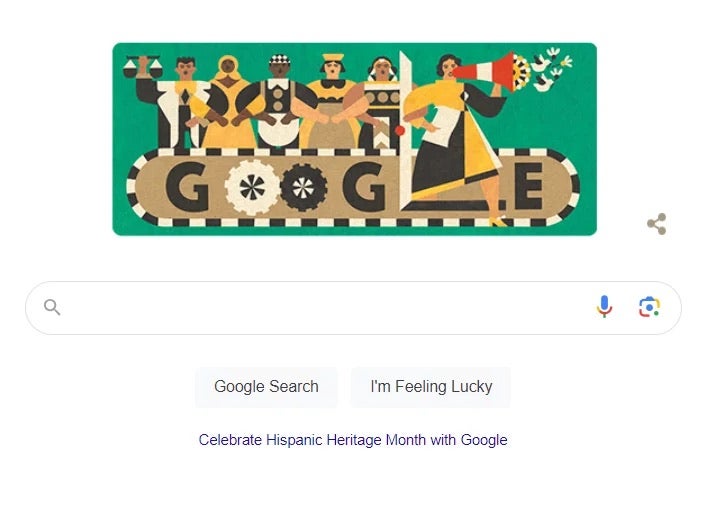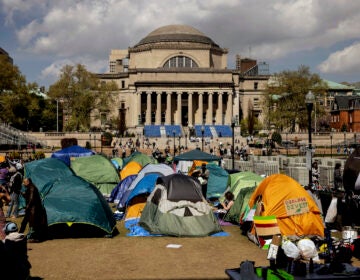Google Doodle honors Guatemalan-American labor activist Luisa Moreno

The Google Doodle on Sept. 15 celebrates Luisa Moreno, who founded one of the first Latino civil rights assemblies in the U.S. and fought for improved working conditions and fair treatment for Latino laborers. (Google/Screenshot by NPR)
To kick off Hispanic Heritage Month, Google is celebrating Luisa Moreno, a Guatemalan-American journalist turned labor organizer who united and mobilized Spanish-speaking communities in the U.S. around worker’s rights nearly a century ago.
Friday’s Google Doodle depicts Moreno holding a megaphone and linking arms with a group of people. The artist behind the illustration, Juliet Menéndez, who is also Guatemalan-American, told NPR she wanted to represent Moreno’s work in rallying people of different races and classes.
“As an immigrant, she came in and brought so many people in the United States together,” Menéndez said. “She did a lot to bring the Latinx community together, at a time when it wasn’t defined as such.”
Menéndez added that the imagery of linked arms was intentional to symbolize the strength that lies in solidarity, as well as to nod to protesting. She also included the scales of justice and hints of yellow as metaphors to Moreno’s commitment to integrity and shedding light on truth. Sprouting out of the megaphone are dandelions.
“In dandelions, when you blow them, the seeds spread far and wide,” Menéndez said. “I wanted to show that she planted the seeds of the American labor movement.”
Moreno advocated for tobacco and food industry workers
Born in Guatemala in the early 1900s (variously reported as 1906 0r 1907), Moreno began organizing as a teenager after learning that women in her country were not allowed to attend university. She protested and lobbied for women to have greater access to higher education. Eventually, the campaign was successful, according to Google.
After a brief stint in journalism, Moreno, still in her 20s, moved to New York City. Incidents of police brutality against Latino protesters there, as well as poor working conditions in garment factories, spurred her return to activism.
In 1935, she became a professional organizer with the American Federation of Labor and advocated for workers across the country, particularly in the food and tobacco industries. Six years later, Moreno was elected vice president of the United Cannery, Agricultural, Packing and Allied Workers of America.
Moreno’s most pivotal work included her efforts to unify the Latino community. In 1938, she founded the El Congreso del Pueblo de Habla Española, or National Congress of Spanish-Speaking Peoples, considered one of the first national efforts to mobilize people from Spanish-speaking countries in the fight for improved working conditions and fair treatment for all Latino laborers.
The federal government eventually took notice of Moreno’s success as a labor leader and began threatening to deport her, according to a pamphlet describing Moreno’s situation and circulated around 1949.
“They can talk about deporting me, but they can never deport the people that I’ve worked with and with whom things were accomplished for the benefit of hundreds of thousands of workers,” Moreno said in the pamphlet, later obtained by the National Museum of American History.
Forced to leave the U.S., Moreno returned to Latin America in 1950, where she continued to organize in Mexico, Cuba and Guatemala. She died in 1992.




